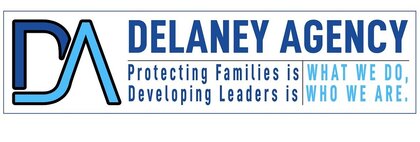
Depending on your location, you might need to meet in person to confirm that an employee has the right to work in the United States. The Department of Homeland Security (DHS) and the Immigration and Customs Enforcement (ICE) have issued temporary rules allowing employers to verify the validity of Form I-9s over video. This solution may not work for all employers. Therefore, it is important to explore other options. It could however improve I-9 compliance.
You may need to permit employees who live in remote areas to have their Form I-9s notarized by a local notary public. Although this is temporary, it could be a good option for you. It is a good idea to discuss the matter with your local notary. It may be difficult finding someone who is willing to do this job. You have two options: to find someone who knows the process well or to hire national law firms that can assist.

Temporary rules have been issued by ICE allowing employers to confirm the accuracy of Form I-9s via fax. This temporary solution is only for now. DHS is still considering making other changes to current acceptable document lists. If you are interested in evaluating this option, you may want to attend a Form I-9 webinar. This webinar can be accredited for one professional credit through the Society for Human Resource Management, HRCI and SHRM.
Information on Form I-9 completion flexibility has been updated by ICE and DHS. The DHS and ICE have also asked for public comments on the subject. In the interim, companies with onsite employees must still comply with the physical inspection requirements. Officials from ICE acknowledged that workers still have COVID-19 concerns and provided exceptions to the rule.
Employers may also complete the Form I-9 with document copies using temporary rules. The in-person document review requirement will not apply to employees who were hired after April 1, 2020. Employers should expect that these employees will still need to be subject to physical inspections. DHS officials also have stated that they will continue to monitor the ongoing national emergency, and will provide additional information about Form I-9 completion flexibilities in the near future.
ICE will continue to provide exceptions from the in-person rule for document review. They will however provide updated guidance regarding how the government will manage the eventual dissolution of the virtual verification program. The government received numerous requests to exempt virtually completed I-9s from the follow-up requirements.

If you're considering Form I-9 Verification over Video, it is essential that you ensure the accuracy of the document and have a review process. A process should be established to ensure that the Authorized Representative has signed the document in a timely, professional manner. Hire a notary public or attorney, accountant, librarian, and other trusted representative.
FAQ
What is the digital nomad lifestyle like?
A digital nomad lives their life in motion. Their lives are fluid, mobile, and flexible. They can go anywhere they want with a laptop and an internet connection.
They travel for business or pleasure, working wherever there is wifi. They spend weeks living out of suitcases, hopping between cities and countries without a second thought.
Digital nomads are the future. They are the generation that does not own land or a property. They are the generation that grew-up playing online video games.
The digital nomads are the future generation of travelers. They will change the way we travel forever.
What jobs are most commonly held by digital nomads
A digital nomad travels between cities to find work. They live out of suitcases and travel to where the work is. Their lifestyle is very flexible, so they can choose when and how much time they spend working. Digital nomads can work anywhere in the world, including remote locations such as islands, forests, mountains, deserts, etc.
The most common types of work include writing, graphic design, web development, software engineering, translation, data entry, customer service, and social media management.
Many digital nomads work remotely and travel. This allows them more flexibility in their location and helps to reduce living expenses. Many digital nomads prefer traveling alone. Some others find it easier connect with local communities as they aren’t tied to any specific place.
Which country is the best place for digital nomads to live?
The world has three main hubs that allow digital nomadism. These are India (Thailand), Brazil, and Brazil. All these countries have very similar weather patterns and cultures. But when it comes to the cost of living and quality of life, they vary wildly. So which do you choose?
Digital nomads should live in places that allow them to enjoy their lives while also working remotely. This means you should find a city that's affordable, has a low-key lifestyle, and offers plenty of adventure.
Low living costs and little distractions are the best places to digital nomadism. These cities are easy to escape.
You can also travel freely within these areas and discover new adventures. These areas offer many cheap accommodation and flights options.
These places are great places where you can meet new people, make connections, and make friends. You have more time to interact with people when you work remotely.
These are my recommendations
-
Visit India.
-
Visit Thailand.
-
Go to Brazil.
Which countries are most popular among digital nomads
Nomadic Mat says India has the highest percentage of digital nomads. More than 1.5 million people live there.
It isn't surprising, however, that this country offers the best internet connection in the entire world. WhatsApp makes it simple to communicate with loved ones and friends.
Nomadic Matt also cites Australia, Canada and France as top destinations. These countries offer affordable accommodation and good weather. They also have a high standard of living.
These are the five best countries to consider when you plan on moving abroad.
-
Argentina - It is safe and cheap.
-
Chile – It is beautiful and safe.
-
Costa Rica - It's safe, friendly, and affordable.
-
Ecuador - It is safe and affordable.
-
Mexico - It's safe, affordable, and close to the US border.
What are the two biggest disadvantages of being a nomadic traveller?
Spending a lot of time without family or friends can lead to inability make long-term plans.
Many people know the downsides to traveling for work. There are many benefits to traveling for work.
You get to meet fascinating people and learn about cultures and countries you wouldn't otherwise know. There are endless opportunities to travel and explore new countries and cities.
It is hard to give up your home and family when you could spend more quality time with them. How do you balance these two seemingly different worlds?
There are ways to minimize the impact of being a nomad. For example, you may choose to live cheaply while working abroad. Perhaps you want to rent out your house in order to spend more time at home with family and friends.
Plan is another way to minimize the emotional impact of having to leave your family. Set up a schedule that outlines where you'll travel and when you'll return. Prepare a backup plan for in the event of an emergency.
Finally, when you return home, give yourself permission to relax and enjoy the comforts of home. Do not feel guilty about taking some time off after a long day of work.
Avoid big decisions like moving to another country permanently for a period of one year. Instead, focus on smaller changes that you can make now.
You can make small lifestyle changes to improve your health and well-being. You can make small changes that will have big impact.
Take some time off work if you have the opportunity. Recharge your batteries and get ready for another adventure.
Are digital nomads able to make a lot?
Digital nomadism can be a fascinating trend. The lifestyle of traveling for months at time. Some say it could be the future of work. Some people think it's a fad. However, it doesn't matter which side you are on. It has certainly made an impact.
The number of people working remotely has increased dramatically since 2008. In fact, according to a study conducted by FlexJobs, remote workers now outnumber traditional office-based employees.
But how much can digital nomads really make? It all depends on the type of job you do, where you live, and whether you are self-employed.
Nomadic Matt reports that he earns $10-$20k a month. However, that figure includes his income from blogging, speaking engagements, and consulting gigs. These jobs don't pay the bills because they are too hard work. He also mentions that he spends roughly 80% of his time traveling.
But, Thailand is a country where you can make more than Americans. Expatistan estimates that the average monthly income is USD 4,000. This is almost double the US median salary.
Not only will you earn more, but also lower taxes and higher housing costs. Consider it seriously if your thoughts are set on moving abroad.
How to get cheap flights to Asia
Skyscanner.com allows you to make savings on airfares. You can search hundreds and compare prices across multiple websites.
Once you find the flight you wish to book, click "book" then fill in all required information. Wait for your tickets to arrive by mail.
Don't rush to purchase your ticket. Sometimes tickets sell quickly. You can always cancel your ticket later.
Statistics
- All it takes is a 5% better profile and proposals than your competitors. (travelinglifestyle.net)
- Being a nomadic entrepreneur means living life 100% on your terms. (worldpackers.com)
- Surprisingly, according to the online quote, our 60-year-old will pay the same cost for both packages for three months in Finland. (travelinglifestyle.net)
- They also offer trip cancellation insurance that covers up to 100% of the trip cost. (travelinglifestyle.net)
- LifeStraw makes ones that remove 99.9% of bacteria and parasites, keeping you safe as you travel the world. (nomadicmatt.com)
External Links
How To
How to get free WiFi around the world
Although there isn't free WiFi everywhere you can find it, there are plenty hotspots. Here are some places from around the world where you can connect to the internet for free:
-
Starbucks offers Wi-Fi free of charge at all locations. Simply look for the sign that says "Wi-Fi", located next to the cash register.
-
Airports often offer Wi-Fi for free. Many airports offer charging points for laptops.
-
Free Wi-Fi is offered by some hotels. You will find signs advertising the free service near the front desk.
-
Many public libraries offer Internet access free of charge. You will only need your library card to get access.
-
Most restaurants offer free Wi-Fi nowadays. Ask for the password at check-in.
-
Wi-Fi can often be found on trains. Click search and enter the name of the train station in Google Maps.
-
Many universities now offer free wireless connections. Look for the network icon labeled "Wireless."
-
Even though zoos might not appear like places where you can enjoy free Internet, many offer this perk. Just look for the logo indicating free Wi-Fi.
-
Most museums offer Wi-Fi free of charge to visitors. Visit the information booth or kiosk located outside the museum.
-
Free Wi-Fi is often offered at trade shows and conventions, particularly during the off hours. Look out for signs advertising WiFi availability at the event.
-
Churches typically offer free Internet access to their members. Find a notice inside the church.
-
Sometimes gas stations offer Wi Fi at no charge to customers. Look out for the "Free WiFi" sign at the pumps.
These are just a few of the five best tips to connect.
-
Avoid public areas. Public WiFi networks are password protected and require payment. You can connect to a private network if you absolutely must.
-
Use a VPN app. VPNs encrypt internet traffic and allow users to access their favorite sites without fear of surveillance. VPNs are especially helpful when connecting to public hotspots as they conceal your location.
-
Always look out for unsecure connections. Anyone can join unsecured networks. They are easier to access than secured networks. They aren't as secure, however, as encrypted networks.
-
Join a community. Free Internet access is available in some communities at local coffee shops and libraries as well as hotels and other venues.
-
Bring your own device. Most airports offer free WIFI, so bring your laptop or tablet to avoid roaming charges.